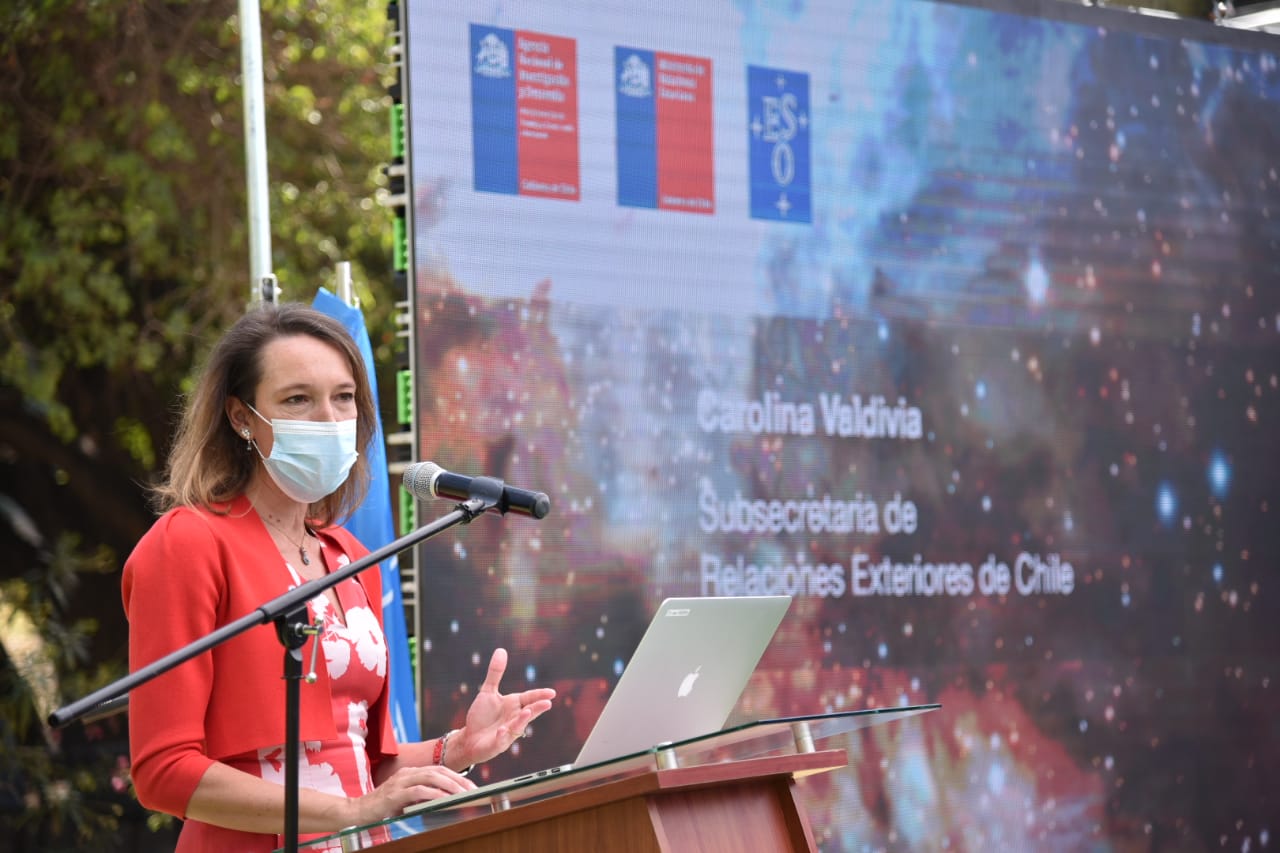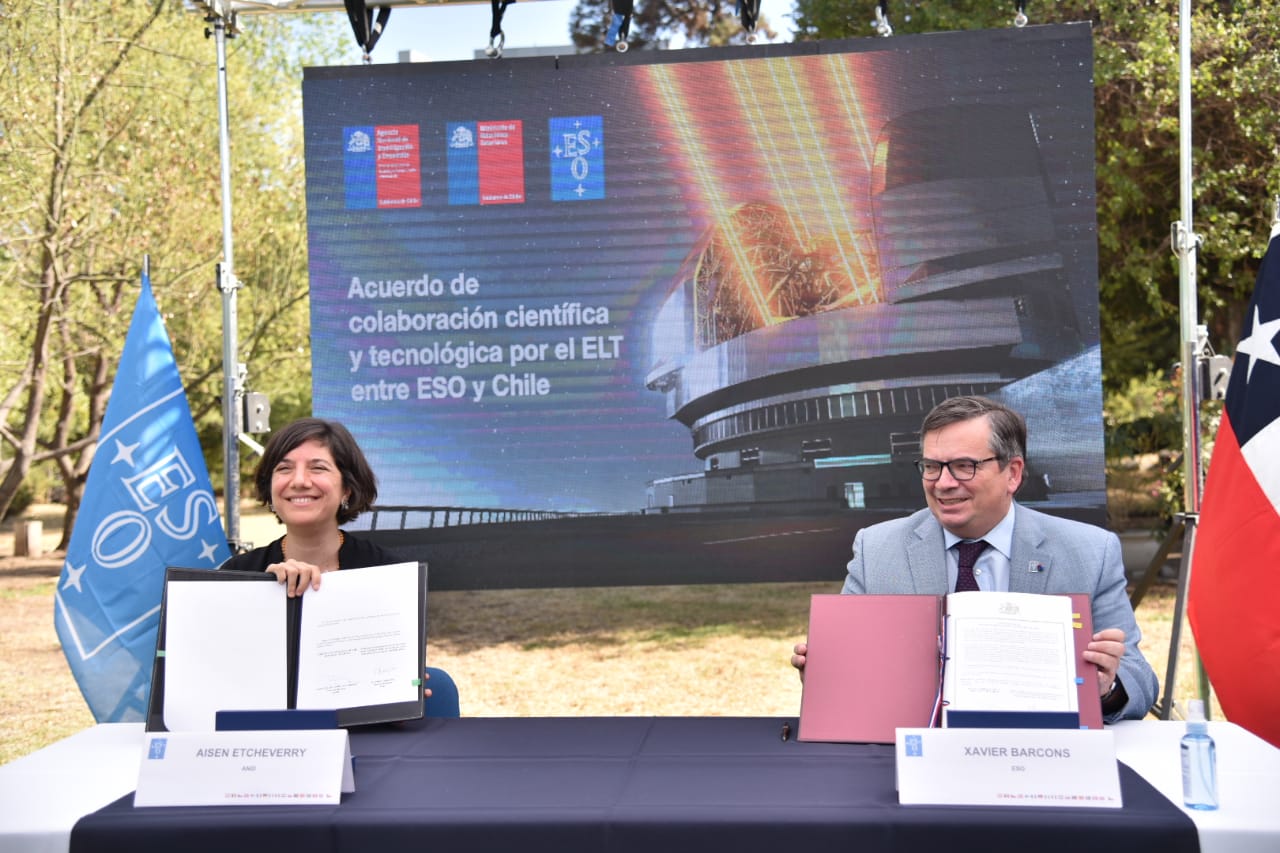 Thursday, February 27th 2025
Undersecretary meets with the Minister of Oceans and Fisheries of the Republic of Korea
Thursday, February 27th 2025
Undersecretary meets with the Minister of Oceans and Fisheries of the Republic of Korea
ESO and Chile sign an agreement to promote scientific and technological cooperation with the ELT

The Undersecretary of Foreign Relations, Carolina Valdivia, participated today in the signing of the scientific and technological cooperation agreement between ESO and the Government of Chile for the construction and operation of the Extremely Large Telescope (ELT), which will be the largest optical/infrared telescope wingspan in the world.
"Our cooperation with ESO leads us to continue pushing the limits of science, allowing us to locate in Chile what will be the largest optical telescope in the world. The so-called 'ELT' is the most recent work that reflects ESO's participation in Chile, as is the case with ALMA, La Silla, and Paranal; the most productive astronomical observatories on the planet, which, in turn, consolidate the identity of our country, linked to astronomical observation," said the Undersecretary of Foreign Relations, Carolina Valdivia.

The agreement, signed at the ESO offices in Santiago by Xavier Barcons, ESO's general director, and Aisén Etcheverry, National Director of the National Research and Development Agency (ANID), will finance projects related to the ELT in engineering, computing, and other areas proposed by Chilean academic institutions. These projects will allow Chile to train highly specialized technical, engineering, and science personnel for at least a decade.

"With the signing of this agreement with ANID, we open new paths in our permanent cooperation with Chile. Now we will jointly finance projects of interest to both Chile and ESO around the largest optical telescope ever built. Through this program, we will strengthen the commitment between ESO and Chile, with an important focus on the Antofagasta region," said Xavier Barcons, ESO Director-General. The ELT alone will collect more light than the sum of all the existing 8-10 meter telescopes on the planet. With its 39-meter diameter main mirror and revolutionary five-mirror design, along with state-of-the-art technology to correct for distortions caused by the atmosphere, you can obtain images 15 times sharper than those of the Hubble Space Telescope.
With the start of observations from the Atacama desert in Chile, scheduled for 2027, the telescope will tackle the greatest astronomical challenges of our era and make unprecedented discoveries.
Related articles
 Thursday, February 27th 2025
Undersecretary meets with the Minister of Oceans and Fisheries of the Republic of Korea
Thursday, February 27th 2025
Undersecretary meets with the Minister of Oceans and Fisheries of the Republic of Korea
 Monday, February 24th 2025
Minister van Klaveren reaffirms Chile's commitment to human rights and gender equality
Monday, February 24th 2025
Minister van Klaveren reaffirms Chile's commitment to human rights and gender equality









